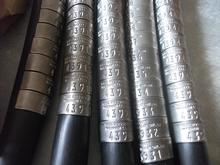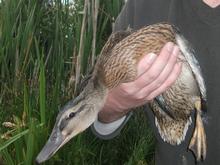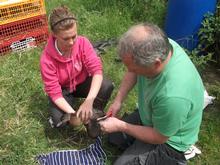WWA Mallard Ringing Program
Since the early beginnings of the Association, the WWA has annually re-stocked between 300-500 mallard per year into the environment, to replace those that are taken during the wildfowling season on the River Kent estuary, Morecambe Bay.
To commemorate the Associations 60th Anniversary in 2010, the club re-introduced its wildfowl leg ringing program under the auspices of the BASC ringing permit scheme. The WWA originally participated in the first WAGBI mallard ringing scheme in the late 50's and ones in the 1970’s and 1980’s. Notable recoveries included a mallard (W.A.G.B.I. ring 225272) released on Talkin Tarn, Carlisle in 1972, that was recovered in Malmo in Sweden in 1976. Another released at Grayrigg, Cumbria (W.A.G.B.I. ring 250263) was returned from Jutland in Denmark 2 years later. We still have some of the original leg rings bearing the W.A.G.B.I. Boarstall Decoy, Bucks tag. Since the formation of the WWA in March 1950, the club members have returned circa 18,000 mallard into the lakes and tarns of South Cumbria and North Lancashire. Early in June 2010, three hundred mallard were tagged with uniquely numbered leg rings by six WWA volunteers from the WWA.
First year ring recoveries showed an interesting spider web dispersal of mallard within a radius of no more than 15 miles from their release point. Mallard released near the estuary obviously favoured dispersal along the Kent Estuary rivers: The Bela, The Gilpin and The Kent. We are leg ringing 400 game farm stock mallard again this year in June 2011. 45 mallard have already been ringed and released from incubated stock eggs.
The WWA strongly encourages anyone who bags a mallard bearing a BASC leg ring to return the following information to BASC: Sex i.e. drake or duck,its leg ring number,the place (include the nearest town) and date of where and when it was shot. Participants will be informed of when and where the mallard was released and we will be able to inform you of how old it was when recovered. How many of our birds will venture across the North or Irish Sea or visit your salt marsh, flooded splash or flight pond this winter or in future years? With the help of fellow shooting and conservation enthusiasts returning the essential information to BASC, more information about mallard dispersal from their point of release and mallard longevity is hoped to be gained.









